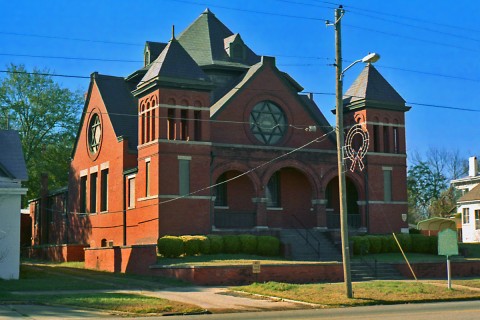I walked across Selma’s Edmund Pettus Bridge and saw a synagogue
Visiting Temple Mishkan Israel

The Edmund Pettus Bridge in Selma, Alabama, is known around the world for one thing in particular. It’s the bridge that hundreds of people walked across as part of the first Selma to Montgomery march, a peaceful protest against the lack of voting rights for African Americans. Forever synonymous with Bloody Sunday, March 7, 1965, the bridge remains a popular pilgrimage site 56 years later.
My wife and I walked across the Edmund Pettus Bridge last month, peering gingerly over the handrail at different points to see the fast-moving Alabama River more than 100 feet below. Cars and trucks whizzed by, mere feet from the pedestrian walkway. I pulled out my phone every so often to Google historic photos that might help my mind locate exactly where the posse of law enforcement officers once stood waiting to crack the skulls of the marchers.
After our bridge walk into history, we climbed back into the car and drove through the business district. Selma is not an affluent community. With a median household income of $27,030, a poverty rate approaching 40 percent, and most of the downtown storefronts vacant, its economic future is uncertain.




